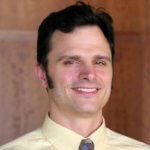Third in a series
Editor’s Note: Inspired by Matthew 25:40-45, which concludes ” … what you did not do for one of these least ones, you did not do for me,” each month in 2017 the Review will provide an in-depth look at the Catholic Church’s response to those in dire need.

Doug Loftus, an eight-grade teacher at Villa Maria, spreads good humor in his classroom. (Olivia Obineme/Special to the Review)

Christine Manlove, executive director of St. Elizabeth School, shares a laugh with Michael Addison, aka “The Mayor.” (Olivia Obineme/Special to the Review)

Students at Villa Maria receive support from one-to-one aides, such as Nicole Huntley, right. (Olivia Obineme/Special to the Review)


